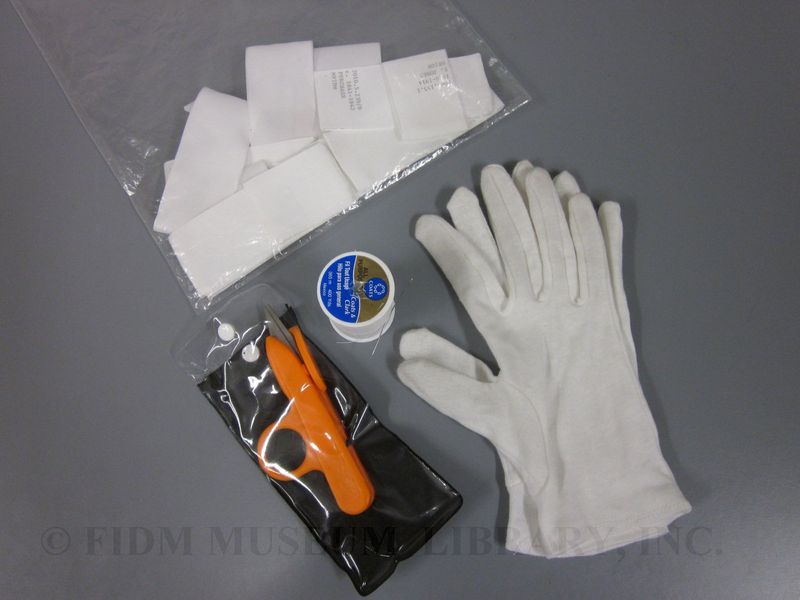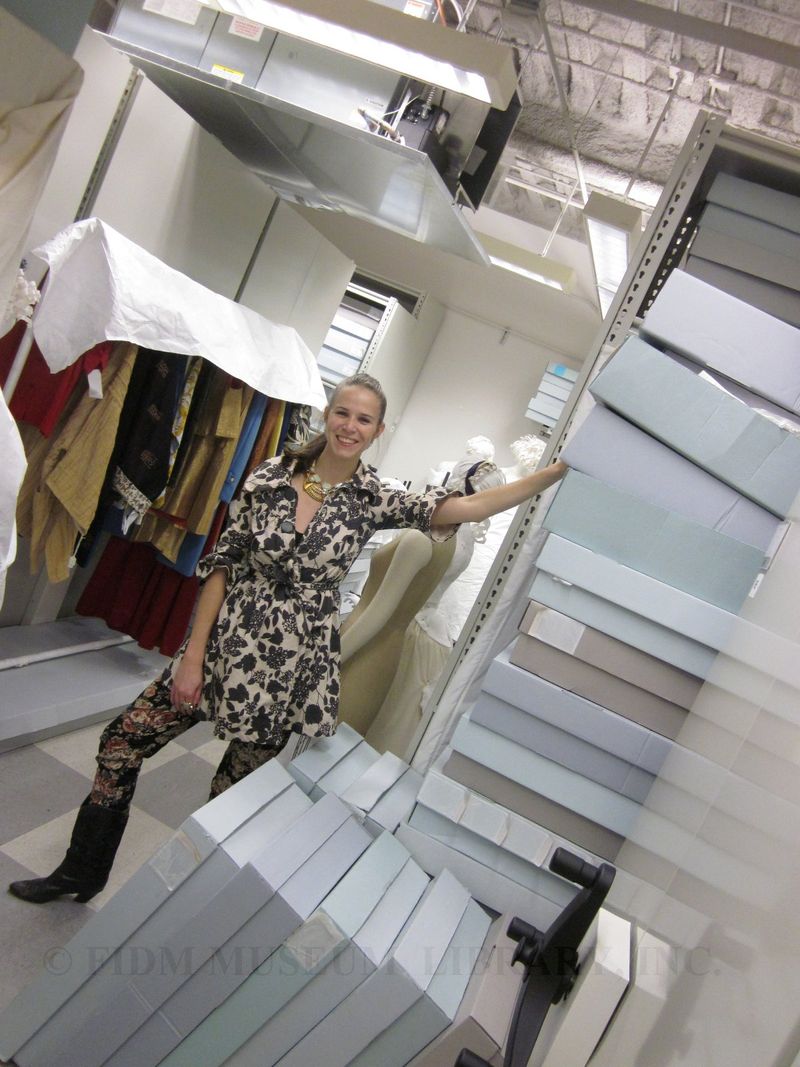Getting organized is a great way to usher in a new year. With everything in its place, new projects are easy to plan and efficient to manage. In preparation for 2013, FIDM Museum Collections Manager and Assistant Registrar Danielle Killam spent several weeks in late 2012 inventorying our collection, and refining its organization. In today's post, Dani takes us through this process.
**********
There is never a lack of tasks to accomplish in our office here at the FIDM Museum & Galleries. However, Museum Registrar Meghan Hansen and I recently began a large-scale inventory project on top of our everyday duties. Are we crazy? Maybe. But we were definitely happy to add this project to our to-do list.
New objects are constantly being acquired into our collection. To make room for new acquisitions, we often need to shift the existing storage configuration. To ensure that we can quickly locate a specific evening gown or pair of shoes, we have set out to verify the location and existence of every single accessioned object in the FIDM Museum collection. Daunting? Yes, but oh-so satisfying. Being in storage is truly my happy place.
When Curator Kevin Jones and Associate Curator Christina Johnson departed for Italy in November, I got to work. I armed myself with the necessary tools needed to safely handle and organize objects as I moved through each section of storage.
 Swiffer wipes, box labels, and pencils/paper for non-stop list making.
Swiffer wipes, box labels, and pencils/paper for non-stop list making.
 Clean cotton gloves, needle, thread, scissors, and ribbon labels.
Clean cotton gloves, needle, thread, scissors, and ribbon labels.
Depending on their material structure and/or condition, objects that had been in “holding areas” were laid on tables or hung on rolling racks. This helped me gauge the optimal storage conditions for each object. I moved between hanging and boxed items, verifying that each object had a label, and was in-order according to our standard method of organization. If a discrepancy was found on any current ribbon label, a new label was made and attached. If there was no label attached to an object, it became Meghan’s duty to verify the object’s identity. For boxed items I listed every object found in each box, as well as the total number of objects. The list was then attached to the outside of the box and placed back on the shelf in its proper position.
 Bathing Suit boxes accounted for and beautifully stacked.
Bathing Suit boxes accounted for and beautifully stacked.
Because each object is visible, hanging storage is much easier to verify. Walking through each aisle was almost therapeutic. I double-checked the condition of each padded hanger, and organized from daywear to eveningwear per each designer's section. There are exceptions to this organization system, such as menswear and non-western objects. These are organized chronologically since these portions of the collection are smaller in size. I was just fine-tuning here and there when it came to hanging objects. Hanging storage was also shifted down a few banks so that garments were given the proper space to “breathe.”
The project isn't quite complete, but we’ve whittled down “holding areas” to near extinction and consolidated enough boxes to create a mountain of empty 30” boxes, making me one happy Collections Manager.
 Dani’s triumphant claim of empty boxes.
Dani’s triumphant claim of empty boxes.



Where are you getting our 30″ archival boxes? I could use a few.
As a fellow museum collections professional, this blog entry hit home for me! Congrats on your pile of empty boxes and beautiful labels (yes, I get excited about those kind of things!). Inventories can be daunting, but oh so rewarding. Great job!